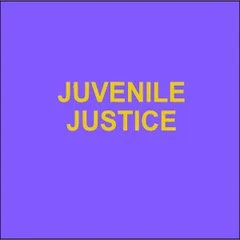Rehabilitation Over Retribution: Rethinking Juvenile Justice for Traumatized Youth
Rehabilitation Over Retribution: Rethinking Juvenile Justice for Traumatized Youth
By Brian L.Traub
A foundational understanding within society is that “bad actors” should be punished as a way of bringing justice to those who have been hurt, deterring future criminal conduct, and rehabilitating the perpetrator.This concept appears, at least facially, as a valid premise for an institutionalized criminal justice system. The problem, however, manifests when the bad actor is merely a child. The complexity of this problem expands when that child has suffered countless amounts of abuse, neglect, sexual violence, and various other forms of childhood trauma at the hands of an abuser. The reality is that the U.S. criminal justice system, having been designed to punish bad actors, cannot adequately address the rehabilitative needs of juveniles who are themselves victims of violence. Instead, it merely subjects them to more of the same trauma they suffered prior to their first criminal act. The current punishment-focused regime of the U.S. criminal justice system is incompatible with, and incapable of, providing real rehabilitative opportunities to juvenile actors who have suffered substantial traumas during their childhood. The current sentencing scheme in the U.S. desperately requires change that could give juvenile criminals an opportunity to escape the incessant cycle of reincarceration that it perpetuates.This Comment examines the tension existing between the philosophical understanding of criminal justice in the U.S. and the reality that criminality is often linked to trauma experienced during childhood. To illuminate the tension that exists between the U.S. punishment focused criminal justice system and its cardinal goal of rehabilitation, Section II of this Comment first explains the philosophical foundation for justifying punishment. Next, Section II discusses the current statutory framework for U.S. federal sentencing. Then, Section II illuminates and discusses the statistically significant role that adverse childhood experiences (ACEs) play in the current legal system. Finally, Section II outlines the historical development of the U.S. criminal justice system. Section III argues that the next step toward a system that more effectively facilitates rehabilitation is congressional reform of 35 U.S.C. § 3553 (§ 3553), and through trauma-informed sentencing practices. Section IV will conclude by reemphasizing the harsh realities of childhood trauma and its connection with the criminal justice system, recognizing the system’s underlying intent to rehabilitate juvenile defendants while advocating for necessary conceptual transformation.
93 U. Cin. L. Rev. 236 (2024), 35p.


